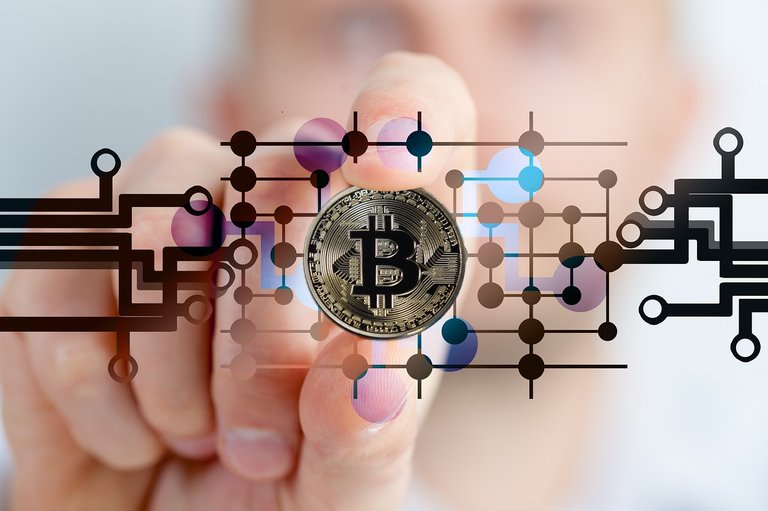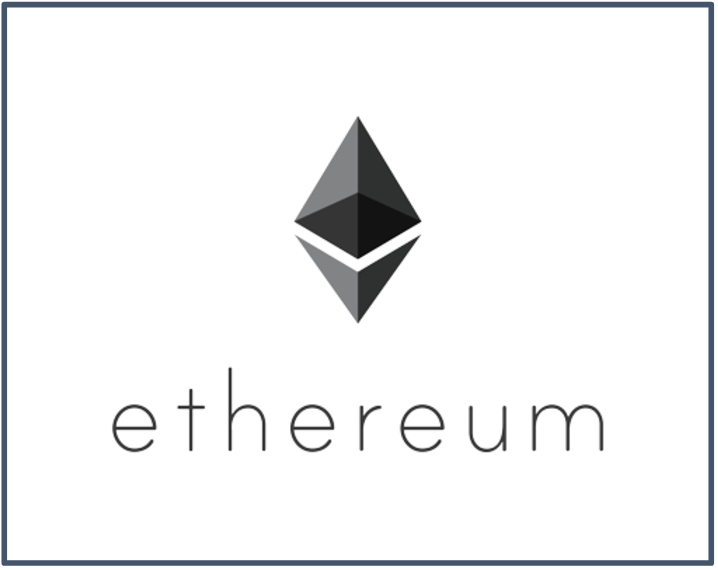
If you are like me, and reading about the cryptocurrency boom in its later stages, I bet you would do just about anything to go back eight years and mine a bit of Bitcoin. Better yet, I would probably go back to 2011 and invest a chunk of my allowance in those 10 cent Bitcoins. Then again, it is understandable that when Bitcoin first came out it was hard to believe in a trust based model; a model whose value is added by the users’ faith in the system.
Unfortunately for all the 2009 skeptics, the Bitcoin is now at around $11,000. While you could argue that the Bitcoin will continue to reign and rise, for many buying at $11,000 is not so feasible. However, for the newly converted cryptocurrency believers, there is Ethereum.
It is important to state that, while I feel very positively about cryptocurrency and the future of decentralized systems, I am not a cryptocurrency expert, nor am I qualified to give investment recommendations. Therefore, I encourage anyone interested in the topic to conduct further due diligence. This article only aims to share my opinion.
First, I will explain the basics of cryptocurrency for those who are new to the game.
Let’s start with Bitcoin. Bitcoin is the first cryptocurrency that we saw come to life in 2009. It is a currency that is not governed by a person or entity, it is governed by everyone, a community that gives it value.
When you open a Bitcoin wallet you receive an address. Your address is a series of letters and numbers. This address is similar to having an email address, but it is only used once (you can regenerate as many addresses as you want). The address is used whenever you want to receive money or send money to someone else. In order to verify that you are the one sending the currency, you will use a private key to sign your address. This private key guarantees that no one else will use your account to spend money.
After you use this address to transfer Bitcoins, there is a process through which the transaction goes through something called a block chain. A block chain is a public ledger, where all the Bitcoin transactions are stored. The block chain is like a bank, except for this bank is public and everyone can verify your transactions and make sure that they add up to the value represented in your Bitcoin wallet. Think of the block chain as a collection of all of your receipts and income checks. The block chain is used to ensure that all your receipts and checks add up. Now imagine that everyone can view and verify your receipts, and ensure that your Bitcoin net worth is actually what is projected. This is the process that we call mining.
Mining is a distributed consensus system, which means that it is a collective decision-making process that affirms whether the transactions are valid, or if you are spending money that you actually have. Mining allows computers all over the world to verify transactions. The miners, who operate these computers receive rewards through new Bitcoins and transaction fees. Although this seems rather simple, Bitcoin mining is actually very tedious and not an easy process at all.
This system however, wasn’t always flawless, there used to be a weak spot in cryptocurrency. There wasn’t a way to make sure that the same transaction wasn’t sent to two different addresses at the same time. Think of this as if the transactions were checks, if you have $6 in your bank account and you write two checks, each for $6, the check will bounce and you will run into some problems with the bank. Bitcoin needed to find a way to solve this in a decentralized manner, since there was no bank to mediate the issue. This issue is referred to as double spending. Shortly after the first Bitcoin double spending incident, they forked and created an updated version that fixed this security flaw.

A fork is a change in the system. The original code is adapted, even though it remains the historical base for the new versions of the code. Sometimes this fork will create two new branches that people will use equally (two types of currency), and sometimes users will just adapt to the new version of the fork and eliminate the old one. For this particular fork, there was a general agreement that the new version, with the updated security, was the better side of the fork to latch on to. After this fork, the mining system requires a different type of verification. All transactions are pending until a miner verifies the transaction, this gives the block chain a chronological order. To protect the system from having two transactions verified at the same time, transactions are packed into blocks and the miners have to solve extensive mathematical equations in order to verify the block. When users mine, the transactions are picked in a lottery manner, so that there is no way to manipulate the system into which transactions are processed first.
The system operates on the principles of game theory, in that if someone were to cheat the system it wouldn’t work in their favor. In order for the miner to be rewarded for the block, a majority of the other miners also have to agree on the verification of the block. This way, if someone wanted to cheat the system, they would have to verify more blocks and complete more equations than every other miner in the system. The mathematical equations are long and tedious, so it is nearly impossible for one miner to complete more blocks than everyone else. This process is called proof of work.
Now that we have a general understanding of the Bitcoin and cryptocurrency, what differentiates Ethereum?

Like Bitcoin, Ethereum is decentralized. Ethereum’s currency is called Ether. Ethereum itself is considered the first world computer. This means that anyone can download the Ethereum client and build on it. Ethereum still uses the block chain as it’s data base, but due to the extensive functionality of Ethereum, you can do a lot more with it than you can on Bitcoin. Ethereum uses Solidity as its programming language, which allows average programmers to build decentralized applications on it. Bitcoin uses the much more complex language, C++, that isn’t flexible to all programmers. This means that using code to create apps isn’t Bitcoin’s forte, making it the main differentiating and industry disrupting characteristic of Ethereum.
Decentralized applications use a set of smart contracts on a block chain that are accessible to users through interfaces. Smart contracts are a code that manipulates the function of transactions. The code will tell the currency what to do in different situations. When the smart contract is uploaded to the block chain, users can access it by inputting Ether- kind of like a vending machine. After the contract is used, the block chain will determine whether the transactions in the smart contract are valid.
A good example of how smart contracts are being used is in the new development of online Ethereum based poker. On the decentralized poker application, the player runs Java script on their browser and the application connects to the smart contract and block chain. The block chain already has pre-programmed random numbers in it (these are called fate channels and are encrypted). At the end of the game the numbers are revealed through the smart contract to ensure that the game was fair.
Poker is only one of the many things that Ethereum can be programmed to do. Smart contracts are the future of law, and are said to be able to replace traditional lawyers. Since the currency is governed by code, code becomes law, and we no longer have to rely on complex text to bind contracts. Additionally, the contracts automatically execute and enforce obligations. If I am buying a product online, the contract holds my receipt, the seller sends the product and gives me a transaction number, if the transaction number is not received on time, the smart contract refunds my money automatically.
Smart contracts not only enforce the laws in the code, but they also have benefits like saving money on intermediaries, safety through cryptography, trust because they are transparent, and speed since you don’t have to spend time manually processing documents.
Unfortunately, there are still a few flaws in these smart contracts, especially if you are dealing with the transaction of physical goods in exchange for cryptocurrency. If a product you receive is damaged, there isn’t an entity to complain to, but the contract will still execute regardless. These issues are currently up for debate and are being tested for flaws and analyzed for ways to fix them. There is no doubt these flaws will be resolved, just like the double spending problem was. When these smart contracts become flaw proof, we will need a lot of Ether in our daily lives. This is why it is important to jump on the Ether train before it is too late.
As we saw with Bitcoin, the skeptics were proven wrong, and the Bitcoin went from being pocket change value, to an industry that is projected to reach trillions. Bitcoin is the new gold standard, and Ether is the future of decentralized law, management, gaming, and much more. I sure don’t want to look back in a few years and kick myself for not buying Ether when I had the chance.
Martin Hauge & Sophia Noel
Works Cited
“A Short Guide to Bitcoin Forks.” CoinDesk, 16 May 2017, www.coindesk.com/short-guide-bitcoin-forks-explained/. Accessed 18 Aug. 2017.
https://www.coindesk.com/short-guide-bitcoin-forks-explained/
“How does Bitcoin work?” How does Bitcoin work? - Bitcoin, bitcoin.org/en/how-it-works. Accessed 18 Aug. 2017.
https://bitcoin.org/en/how-it-works
https://bitcoin.org/bitcoin.pdf
liftconference. “YouTube.” YouTube, YouTube, 23 Feb. 2016, www.youtube.com/watch?v=0ilYnuP1qd4. Accessed 18 Aug. 2017.
“What Are Smart Contracts? A Beginner's Guide to Smart Contracts.” Blockgeeks, blockgeeks.com/guides/smart-contracts/. Accessed 18 Aug. 2017.
https://blockgeeks.com/guides/smart-contracts/
“What is 'Distributed Consensus?” Cryptorials, cryptorials.io/glossary/distributed-consensus/. Accessed 18 Aug. 2017.
http://cryptorials.io/glossary/distributed-consensus/
“100xinvestors Webinar.” 100x Investor Webinar, 100xinvestors.com/. Accessed 18 Aug. 2017.
Stick with the leaders. This is only getting started